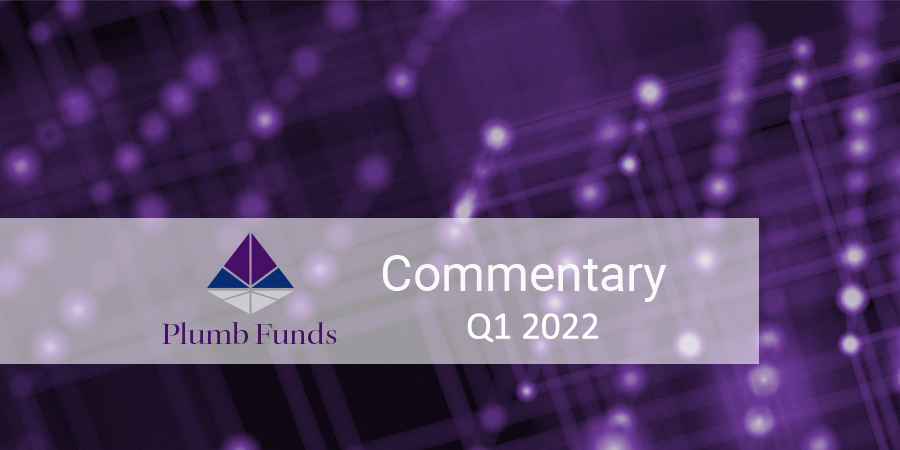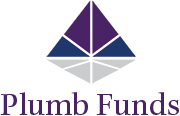
Thomas G. Plumb, CFA
Lead Fund Portfolio Manager
President, CEO, Chairman
As you would expect, war, inflation, supply chain disruptions, and Central Bank tightening, combined to set the stage for the worst world stock market quarter in two years (the start of the pandemic global shutdown in March of 2020). Globally, as you would expect European markets have faced an exceptionally difficult period with all major indices down over 10% and, of course, the Russian stock markets down more than a third. Increased debt issues and covid shutdowns weighed on the Chinese markets and they have continued last year’s decline so far this year.
In contrast to the last decade, the commodity exporting Latin American countries were some of the best performing indices.
Here in the United States, the correction continued in the tech weighted NASDAQ Index and the small and mid-sized growth companies with industry leaders like Adobe, AMD and Autodesk declining double digits from where they began the year.
In addition to the strife affecting the stock markets, rising interest rates caused bond prices to decline. The ten-year US Treasury note issued last November is now trading 8% lower than where it started the year. The old adage “Don’t fight the Fed” is one that we believe investors should always remember. We continue to believe that any fixed income investments should remain focused on shorter term bonds or bonds that have variable rate features that allow their yields to increase as the Federal Reserve continues its policy of increasing interest rates to fight inflation.
But if you recall two years ago, the stock market declines the most during periods where uncertainty cause the greatest apprehension. March of 2020 was followed by an incredibly robust recovery in the equity markets even while the full impact of the pandemic was unfolding. Declining stock prices coupled with increasing earnings reduces the relative prices of stocks. In fact, the S&P 500 growth index saw a decline in its P/E ratio while earnings advanced over 5% from the previous quarter. The three companies mentioned above are prime examples of industry leaders that had rising earnings and robust growth prospects that are currently available at lower prices during this period.
The humanitarian crisis in the Ukraine will continue to tragically unfold with profound consequences politically and economically. The pandemic disruptions in supply chains already had the world reviewing priorities in self-sufficiency and raised the understanding of consequences to the global outsourcing that fueled worldwide economics for the last fifty years.
Challenges are abundant, but challenges also create opportunities. Data, its use, and security will continue to garner significant attention and resources even while countries review all aspects of their security. The need for multiple redundancies to supply chain manufacturing, transportation and energy sources will require investment. Company’s and nations providing options to these needs will have the opportunity to provide sustainable long-term growth potential to their business models.
We will continue to seek to grow your portfolios while attempting to avoid permanent impairment by selectively investing in companies aiming to provide the leadership necessary to address these uncertain times and, where appropriate, investing in short-term bonds that should relatively hold their value even in a rising rate environment.
 SPXT-S&P 500 Total Return Index. S&P 500 is an unmanaged index which is widely regarded as the standard for measuring large-cap U.S. stock market performance. Calculated intraday by S&P based on the price changes and reinvested dividends of SPX with a starting date of Jan 4, 1988.
SPXT-S&P 500 Total Return Index. S&P 500 is an unmanaged index which is widely regarded as the standard for measuring large-cap U.S. stock market performance. Calculated intraday by S&P based on the price changes and reinvested dividends of SPX with a starting date of Jan 4, 1988.
European Markets refers to the single market of the European Union in which goods and services are freely traded between member counties, and which have a common trade policy with the non-EU countries.
The Moscow Exchanges is the largest exchange in Russia, operating trading markets in equities, bonds, derivatives, the foreign exchange marker, money markets and precious metals.
Chinese markets are primarily owned by Chinese investors, with just over 5% of shares owned by international investors, U.S. markets have a mix of local and international investors.
10-year treasury note is a debt obligation issued by the United States government with a maturity of 10 years upon initial issuance.
The Nasdaq composite is a stock market that includes almost all stocks listed on the Nasdaq stock exchange. Along with the Dow Jones Industrial Average and S&P 500, it is one of the three most followed stock market indices in the United States.
Price to Earnings (P/E) Ratio id the ratio for valuing a company that measures its current share price relative to tis earnings per share.
It is not possible to invest directly in an index.
The Fund’s investment objectives, risks, charges, and expenses must be considered carefully before investing. The prospectus contains this and other important information about the investment company, and it may be obtained on www.plumbfunds.com or by calling 1- 866-987-7888. Read it carefully before investing.
Past performance does not guarantee future results.
Opinions expressed are those of the author as of March 31, 2022 and are subject to change, are not intended to be a forecast of future events, a guarantee of future results, nor investment advice.
Earnings growth is the annual rate of growth of earnings from investments.
Mutual fund investing involves risk. Principal loss is possible.
The fund may invest in small and mid-sized companies which involve additional risks such as limited liquidity and greater volatility. The funds invest in foreign securities which involve greater volatility and political, economic and currency risks and differences in accounting methods. Because the funds may invest in ETFs, they are subject to additional risks that do not apply to conventional mutual funds, including the risks that the market price of an ETF’s shares may trade at a discount to its net asset value (“NAV”), an active secondary trading market may not develop or be maintained, or trading may be halted by the exchange in which they trade, which may impact a fund’s ability to sell its shares. The fund may also use options and future contracts, which have the risks of unlimited losses of the underlying holdings due to unanticipated market movements and failure to correctly predict the direction of securities prices, interest rates and currency exchange rates. The investment in options is not suitable for all investors. The Plumb Balanced Fund will invest in debt securities, which typically decrease in value when interest rates rise. This risk is usually greater for longer-term debt securities.
Fund holdings are subject to change at any time and should not be considered a recommendation to buy or sell any security.
Click here for Plumb Equity Holdings and here for Plumb Balanced Holdings as of 12.31.2021
Diversification does not assure a profit nor protect against loss in a declining market.
Plumb Funds are distributed by Quasar Distributors, LLC, distributor.
